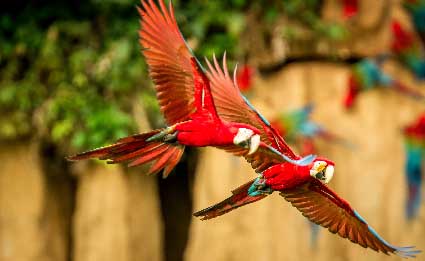Galapagos Cormorant flightless is an amazing and funny bird. Watch a video of the great diving capacity and discover 11 cool facts about the unusual flightless cormorant.

11 Facts About Flightless Cormorants in the Galapagos
These aren’t your typical birds. They may look a little bit funny, but flightless cormorants (phalacrocorax harrisi) have a charm all their own that will fascinate you on your next Trip to Galapagos.
1. Flightless Cormorants Live up to Their Name
As you may have guessed, flightless cormorants are, well, flightless. Even though they have some scruffy little wings, they are the only cormorants that can’t fly.
The bird’s keel (an extension of the breastbone) is smaller than it needs to be for flight, so fewer of the large muscles necessary for flight are connected to it. The bird can still lift its wings, but cannot fly with them.
2. Their Wings Still Have a Purpose
Even though they can’t fly with their wings, flightless cormorants use their stubby little wings for balance when they jump from one rock to another.
3. Cormorant flightless wings aren’t Waterproof
Flightless cormorant wings don’t produce very much oil so they aren’t waterproof like many birds wings. After a dive in the ocean, the birds need to sit on the rocks with their wings out to dry them out in the sun.
Flightless cormorants look like they are trying to be majestic, but not quite getting there. They look pretty funny with their shrimpy little wings held out and glowing in the sunlight.
4. Being Flightless Has its Benefits
These cormorants have much softer and thicker feathers than the flying cormorants. These denser feathers help the flightless cormorants because air gets trapped in the feathers and keeps them warm and afloat.
Watch on YouTube
5. They’re a Little Chubby
Flightless cormorants are the heaviest cormorants in the world, weighing up to 11 pounds (5 kg).
6. The Galapagos Cormorants are the largest
Ok, so they aren’t just heavier than the 39 other species of cormorants, they are also bigger. Flightless cormorants are the largest cormorants alive measuring up to 40 inches (100 cm).
7. Eyes Like the Ocean
The flightless cormorant’s eyes turquoise. The reason for these fancy eyes isn’t clear, but they look pretty neat!

8. They Feed in the Ocean
Flightless cormorants tuck in their wings and dive into the ocean to catch their dinner – which consists of octopus, rockfish, and eel.
9. They Are Vulnerable to Extinction
It is estimated that there are only about 2000 mature individuals in the Galapagos Islands.
Fortunately for them, the islands are protected and the national park is working hard to keep the animals as safe as possible. Check out point #11 to learn a bit more about that.
10. Flightless Cormorants are Only in Galapagos!
If you want to see these funny birds, you’ll have to travel to the Galapagos because they are only found on the Galapagos Islands of Isabela and Fernandina. In fact, the flightless cormorant is endemic to the Galapagos and is often called simply the “Galapagos cormorant.”
11. They Don’t Have Predators
Flightless cormorants don’t really have any natural predators. They are threatened by human disturbance and pollution, like oil spills. They are quite fearless of people which can cause them some problems.
A big threat is potentially invasive species like cats, dogs, and rats. The birds also get caught in fishing nets and can die.
The Galapagos National Park and Charles Darwin Foundation are working hard to try to keep the Islands as pristine as possible, but they need your help.
Do your part by reading all the rules before traveling, being especially careful not to bring organic things (such as fruit or nuts) that could have bugs or seeds – these things can make a big impact in a new environment.
Also be sure not to litter or damage the native plants or animals during your visit.

The Unique Birds of Galapagos
Flightless cormorants are definitely unique: they are the only flightless cormorants in the world, they are the biggest cormorants, they are only found in Galapagos, and they hardly have any predators.
They may look a little funny, but we can all agree that they are lovable in their own way.
We hope you have enjoyed learning about flightless cormorants! Which fact was your favorite? Check out some more amazing and unique Galapagos birds like the blue-footed boobies and magnificent frigatebirds!
Explore our Birding Watching Trips

Birds of the Ecuadorian Amazon
Explore the amazing biodiversity of the Amazon Rainforest accompanied by a bird specialist guide

Birding at the Tumbesian Region
The Tumbesian lowlands are considered as an Endemic Bird Area by BirdLife International.

Birding at the Choco Cloud Forest and Andes Slopes
Ecuador’s Choco lowlands has the greatest concentration of restricted range endemic species in the world.
Ecuador Phone: (593) 2-3801125 / 2-3801149 Email: info@latinrootstravel.com Skype: latinrootstravel.ecuador Latin Roots Travel Av del Establo y Calle E, Centro Corporativo Financiero Site Center, Torre 3, Oficina 107, Quito – Ecuador
Powered by Auveron Studio


